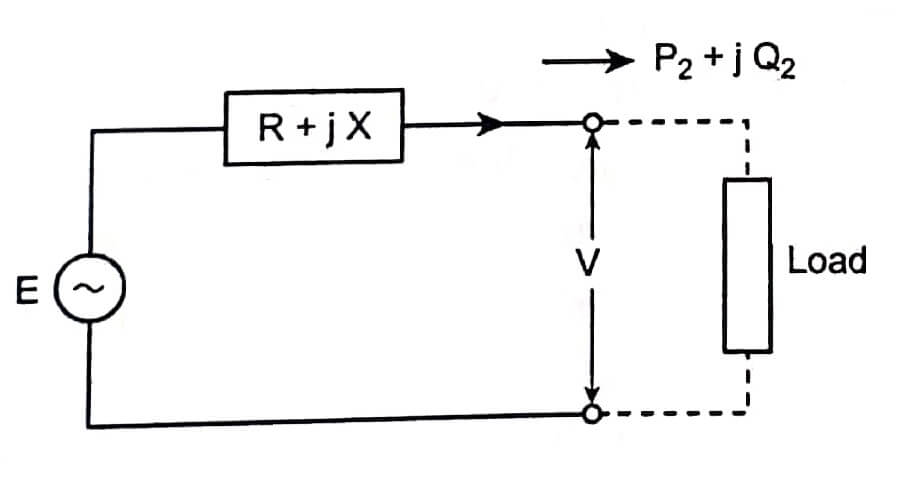A power system is said to be well designed if it gives a good quality of reliable supply. Voltage level maintained within reasonable limits is referred as good quality. If reactive power and voltage control variation is more than specified value, the performance of equipment suffers and also the life of equipment is sacrificed.
When the load on the system increases, the voltage at the consumer terminals falls due to the increased voltage drop in alternator synchronous impedance, transmission line, transformer impedance, feeders and distributors.
Power is supplied to load through transmission line, keeping sending end voltage constant.
The higher load we have, smaller the power factor. Service voltage are usually specified by a nominal value.
For example, 220 volt residential supply circuit, the voltage might normally vary between limits 210 and 230 volts. The picture on a television starts rolling if the voltage is below certain level. While sudden drips or rapid fluctuations of less than or 1.5 per cent produce annoying light fluctuations, they are called as light flicker.
Other methods for controlling voltage are tap changing transformers, regulating transformers, etc. Synchronous condenser, static shunt capacitors and shunt reactors are common source of reactive power.
Requirements of Voltage and Reactive Power Control
For efficient and reliable operation of power system should have the following:
- All the machines and equipments are designed to operate at a certain voltage. Operation above or below the allowable range could damage them.
- System stability is increased to maximize utilization of the transmission system. Voltage and reactive power control have a significant impact on system stability.
- The reactive power flow is minimized so as to reduce I²R and I²X losses and to operate the transmission system efficiently, mainly for active power transfer.
The reactive power cannot be transmitted over long distance, voltage control has to be affected by using, special devices dispersed throughout the system. This is in contrast to the control of frequency which depends on of maintaining voltage constant is the overall system active power balance. The problem that the loads keep on changing over a wide range, when the load varies, the power requirement also varies.
Importance of Voltage Control
The variations of voltage at load will affect the consumer terminals. So, we should maintain the voltage within prescribed limits for the following reasons.
- In lighting load, the lamp characteristics are very sensitive to changes of voltage. If the supply voltage decreases, then the illuminating power may decrease. If the supply voltage increases, the life of the lamp reduces.
- In induction motors, the voltage variations may cause erratic operation. If the supply voltage increases, the motor may operate with a saturated magnetic circuit and produce heating, thereby low power factor. If the voltage decreases, the starting torque of the motor may reduce.
- In distribution transformers, the voltage variations may cause excessive heating and thereby ratings of transformer.
Location of Voltage Control Equipment
The voltage control equipments are connected between the generating station and the consumers. It is used at more than one point in any part of power system because, the power network is very large and there is a considerable voltage drop in transmission, distribution systems and the power system circuits have dissimilar load characteristics. Voltage control equipment is located at
- Generating stations.
- Transformer stations.
- Feeders.






